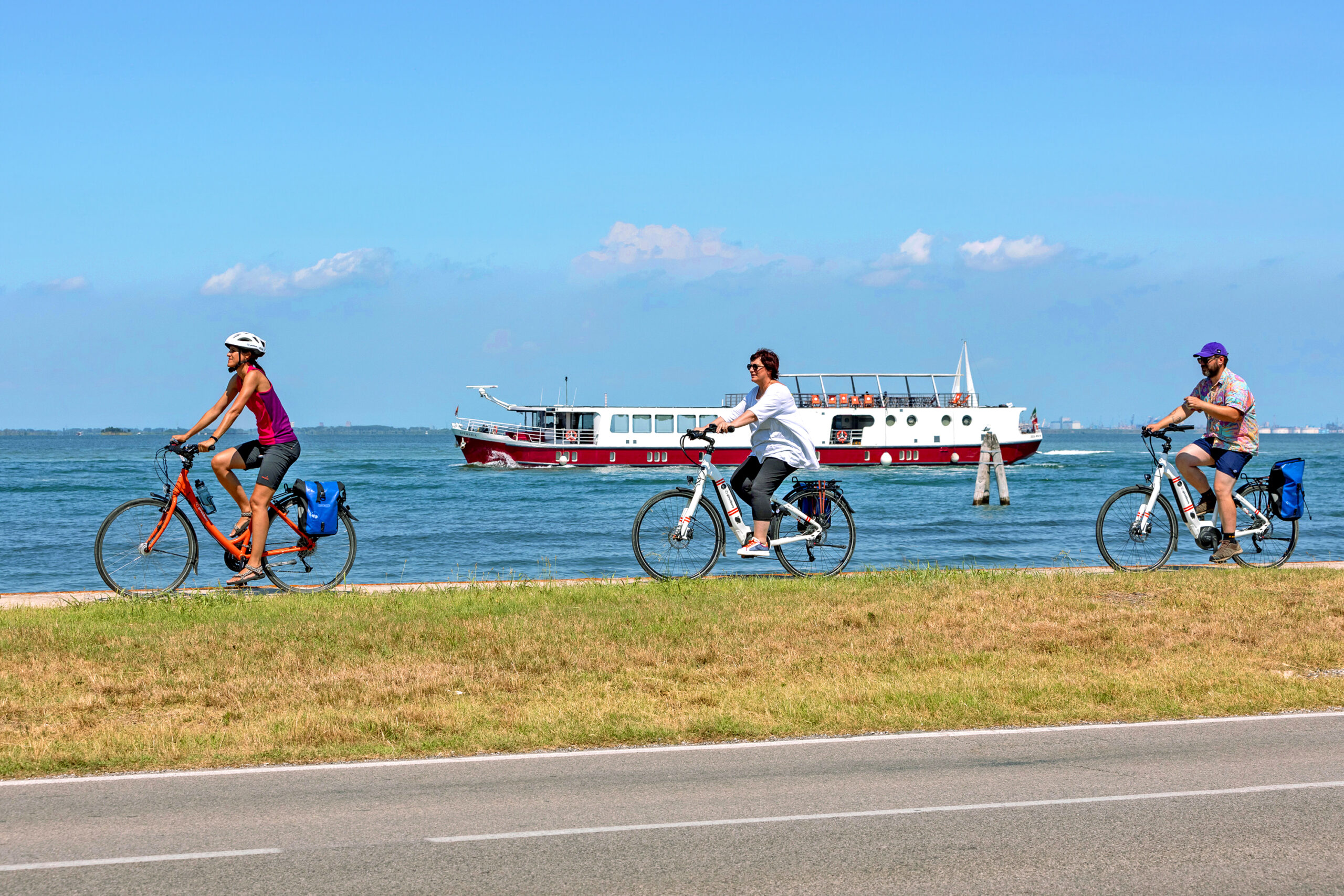
/ Girolibero / to discover bike and boat unusual trips
An unexpected journey from Mantua to Venice by bike and barge
A trip that everyone should do once in a lifetime: from Mantua to Venice by bike and barge. Forget crowded places and kilometer-long queues: here you sail on the water and get off the boat for easy pedaling that will take you to unusual places like the magical Museo della Giostra and Lio Piccolo, and usual places like Venice and Mantua, but from a new point of view.
Starting from Mantua and arriving in Venice, crossing rivers and cycling in places where time seems to stand still, is a way of traveling that will stay with you for a long time.
This is not a journey of great palaces or Renaissance villas, but a combination of details and people, like Giuliano with his passion for darts, or Paolo and the scents of his distillates.
Here you can meet flamingos, go bird watching, and reach Venice from the sea, all interrupted by the life of the river and the rules of a captain.
A journey that will appeal to those who know how to enjoy life, down to the smallest things, which in the end are the greatest, like a barbecue (even with vegetables!) in a small town of 300 inhabitants that is impossible to forget.
We will tell you step by step how the first bike and barge in Italy came to be and what makes this trip so unique.
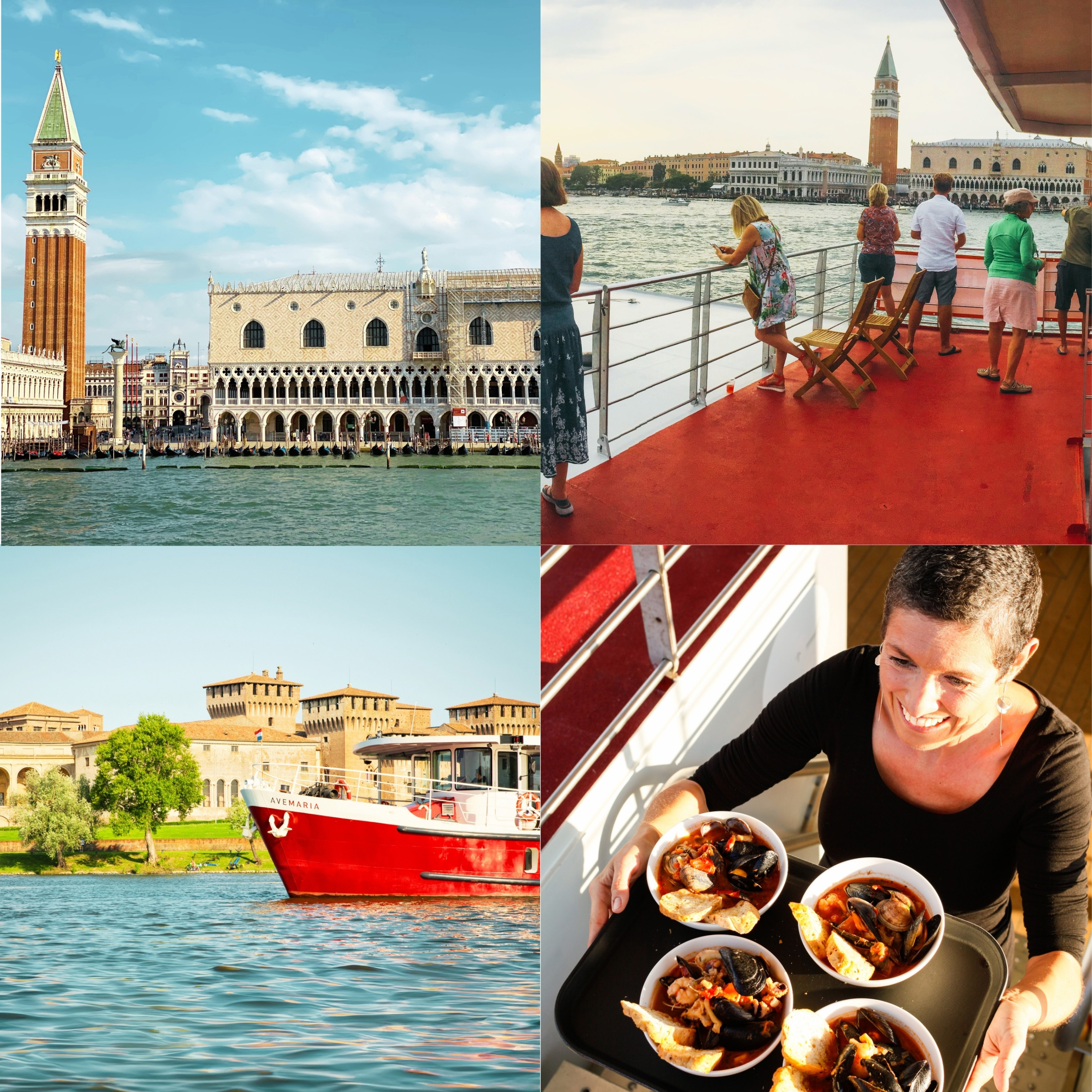
From Holland to Italy: a curious insight
In the Netherlands, this has been going on forever, or almost forever.
It was in the 1980s when the Dutch came up with the idea of turning some merchant barges into floating hotels, capable of accommodating twenty or so passengers.
A bit spartan at first, over the years they became more and more comfortable and equipped enough to become a new idea of tourism: the bike and boat.
In Italy, on the other hand, no one had ever done it, at least not until about fifteen years ago, when a crazy intuition became a real and brilliant reality: to bring bike and barge travel to Italy.
It is not like in Holland, where people travel by bicycle and goods are transported mainly by river.
In Italy, rivers are not considered as an alternative route.
So where is the affinity? In the river and canals, both in Holland and Italy, these waterways have a centuries-old history to tell, winding its way through stories and hard-to-reach places.
In the beginning, there were many restrictions to realize this project, but as luck would have it, a breakthrough came in 2002 with the opening of the Fissero Tartaro – Canal Bianco canal, and finally Italy had its own reliable waterway and Mantua could be connected to Venice and the Adriatic Sea. There are no more excuses for not realizing the impossible dream of traveling in Italy by river. Only one thing is missing: a boat suitable for river travel.
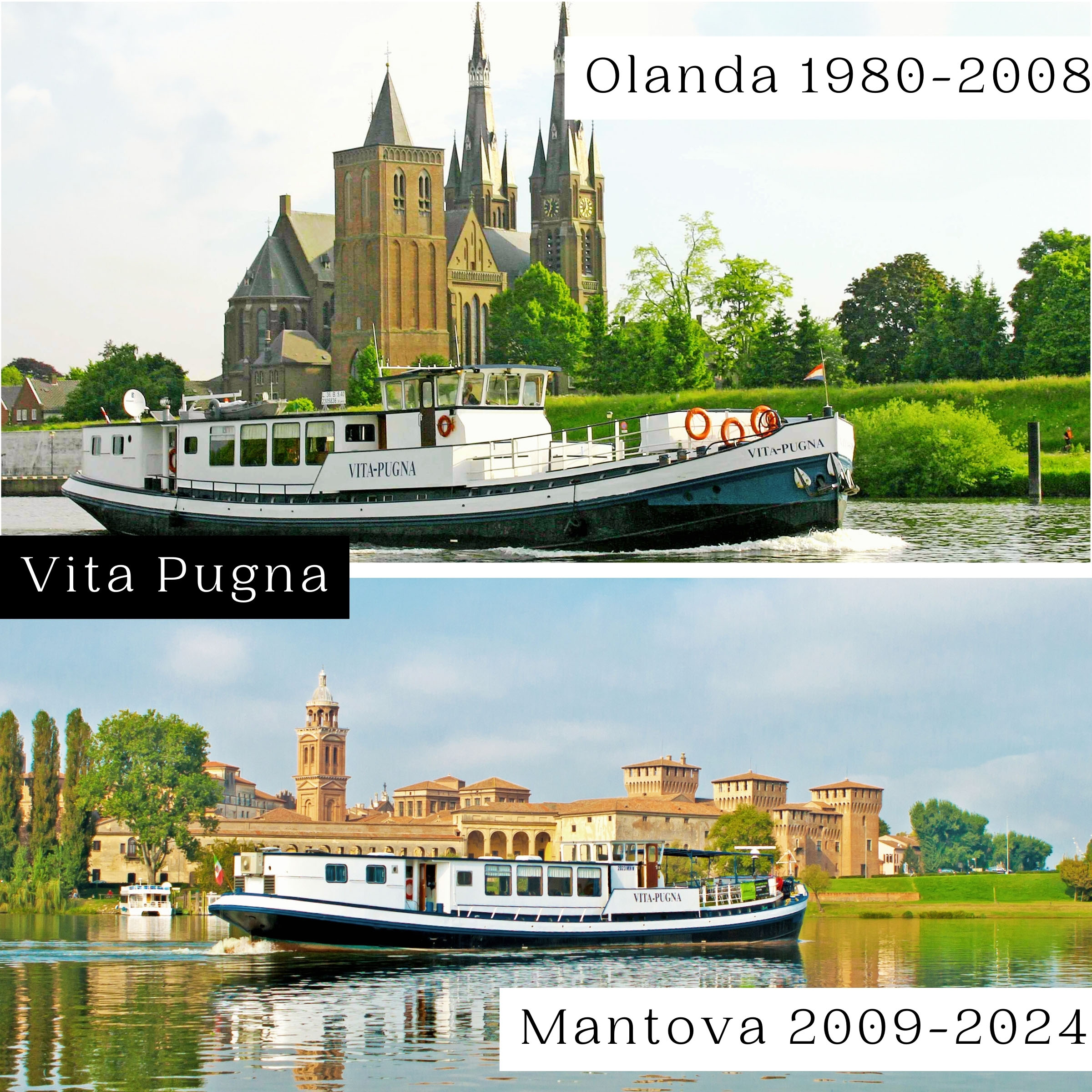
Vita Pugna and Ave Maria: the barges and their stories
Vita Pugna was born in Holland, Ave Maria in Italy. Together, they are one of the reasons why traveling by boat and bike in Italy can be considered epi,c thanks to their stories of crazy ideas, adventurous journeys and dreams realized.
TIn order to navigate the low-traffic roads and rivers and canals of the Veneto region, you cannot use ordinary boats. You need boats suitable for navigation, just like in the Netherlands. Enter the Dutch Vita Pugna and the crazy idea of bringing it to Italy, where there are no such boats. The Vita Pugna is designed to overcome the bottlenecks of the waterways and is also perfect for the Italian rivers. Everyone thinks it is impossible to bring Vita Pugna from Holland to Italy by water: there are Dutch people who bet on the failure of the enterprise and people who still talk about it, but Vita Pugna hits the mark. With courage she sailed the Rhine, the Danube, the Black Sea and the Adriatic until she reached the Mantua shipyard. There was just enough time for a few tweaks and she immediately set off on her first voyage from Venice to Mantua. It is 2009 and a sell-out gives the impetus for the creation of a second boat, Ave Maria.
Ave Maria was born in Italy, in Veneto, inspired by the Vita Pugna. To build it, the strength and brains of the companies in the Veneto region, located along the Mantua-Venice route, where there is a deep-rooted craftsmanship due to the great tradition of shipbuilding.
Everything has been thought out down to the last detail: an innovative air conditioning system that can recycle the thermal properties of the exhaust air; the ship’s lighting system is exclusively LED; a state-of-the-art system for purifying dark water, which is certified as clean water when it is released into the canal; the ship’s speed is kept within defined limits in order to minimize bank erosion and the impact on the ecosystem.
A new successful challenge: Bici e Barca in Italy now has two allies for unforgettable water adventures.
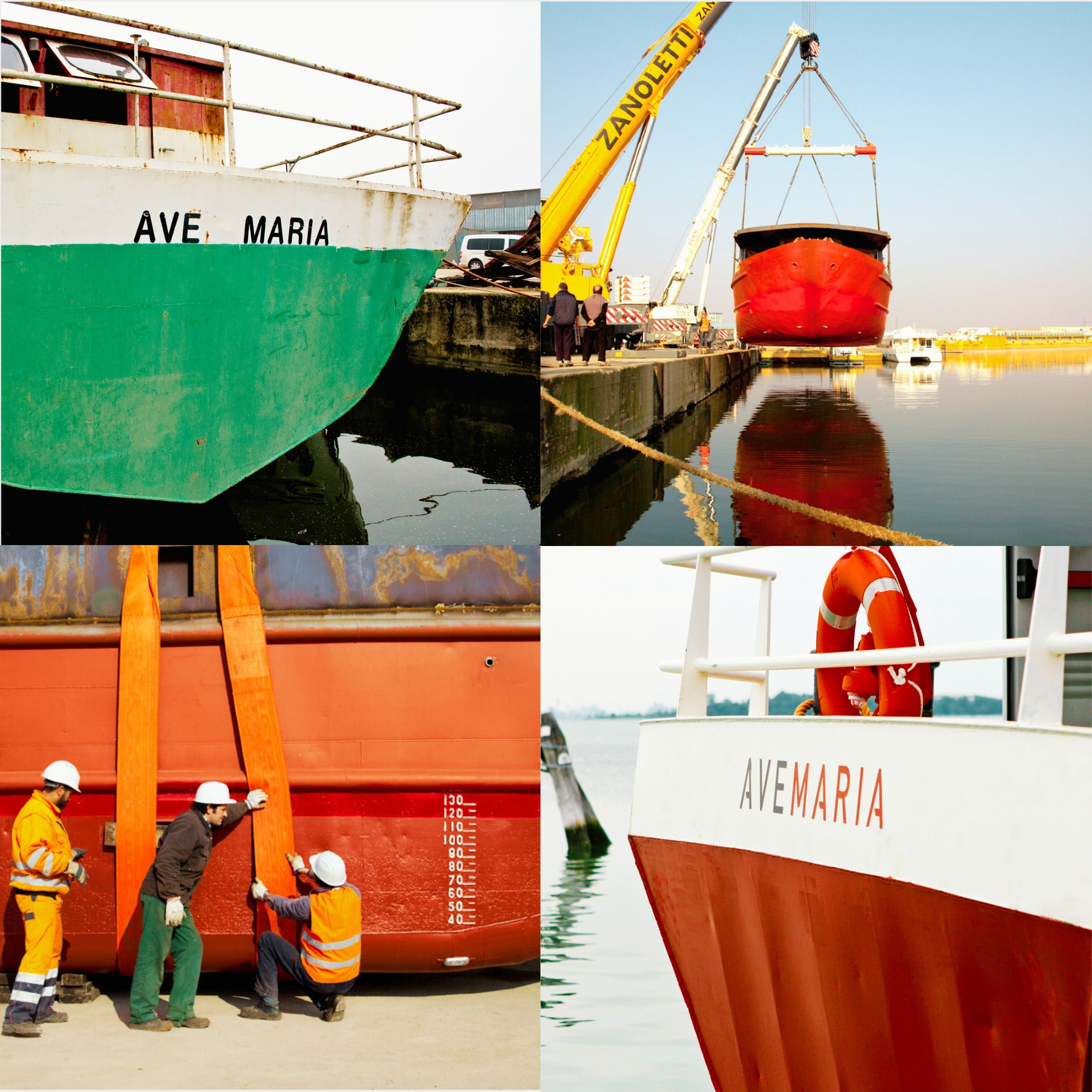
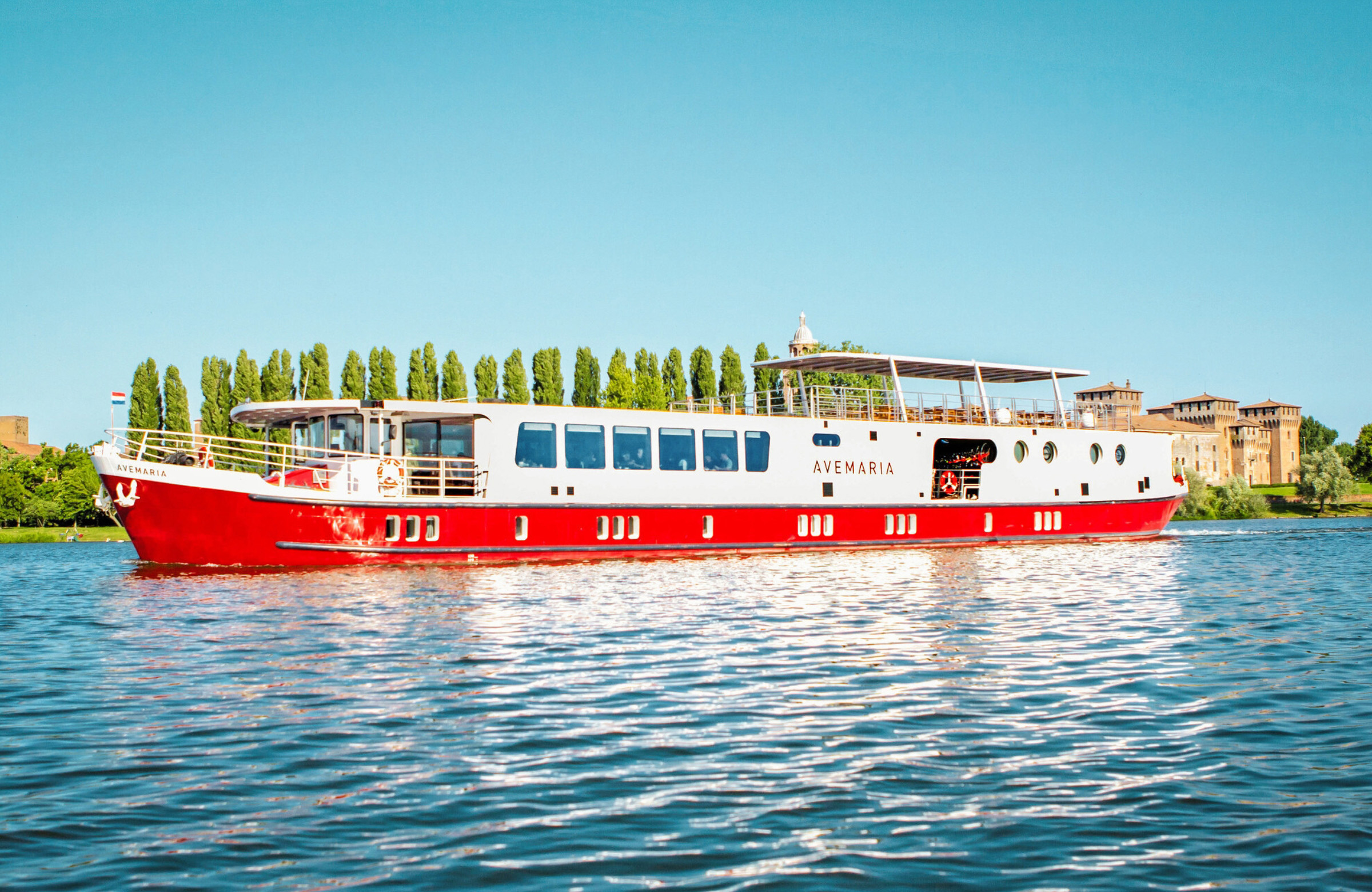
Water as a common thread
Sailing on a boat-hotel between the rivers and the sea, seeing lotus flowers bloom in the lakes of Mantua (in summer!), swimming on the wild beach of Porto Caleri, discovering Venice from the sea, watching pink flamingos soar over the Po Delta: on a trip from Mantua to Venice, water sets the pace for everything.
Water is everywhere and connects all the places you touch during the boat and bike trip. There is Mantua, a city of water, with the three lakes that surround it: Lago Superiore, Lago di Mezzo and Lago Inferiore. This is where the lotus blossoms are born in the summer: from the roots that sink with force into the muddy marshes, they push the flower stem up to bloom in the sunlight. Water is also the calm water of Pellestrina, where time seems to stand still, thanks to the traditions that still survive in this small village, from boating to fishing, in a unique environment of dunes. Water in Venice is history: you sleep in the lagoon, in the Giudecca area, where not far away you will meet the only remaining gondola builder, Franco Crea, a true institution. And again, water is the living water of the Po Delta, where you can see pink flamingos (arm yourself with binoculars!), but also other birds, as there are more than 350 species here, from herons to cormorants to birds of prey.
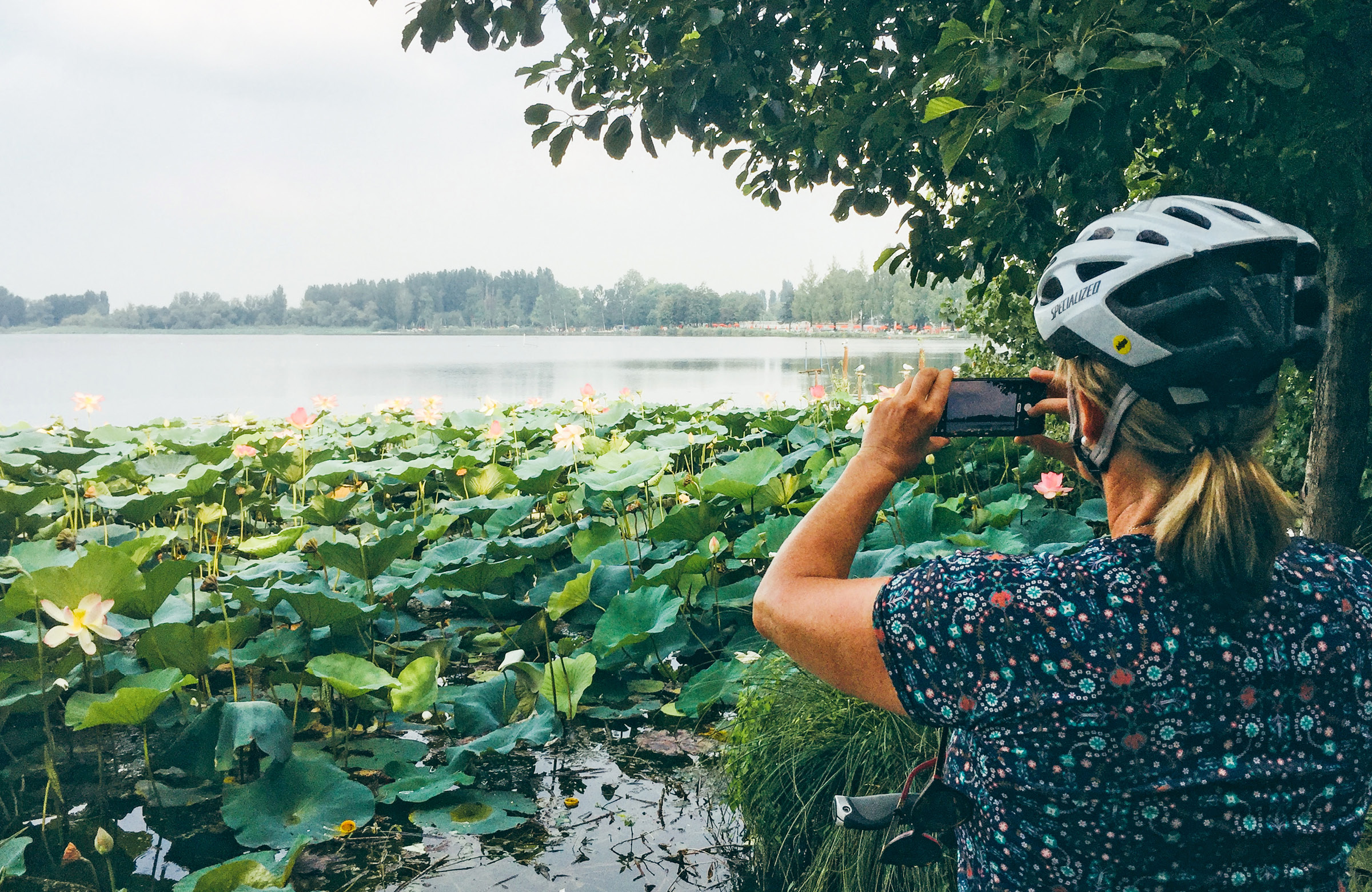
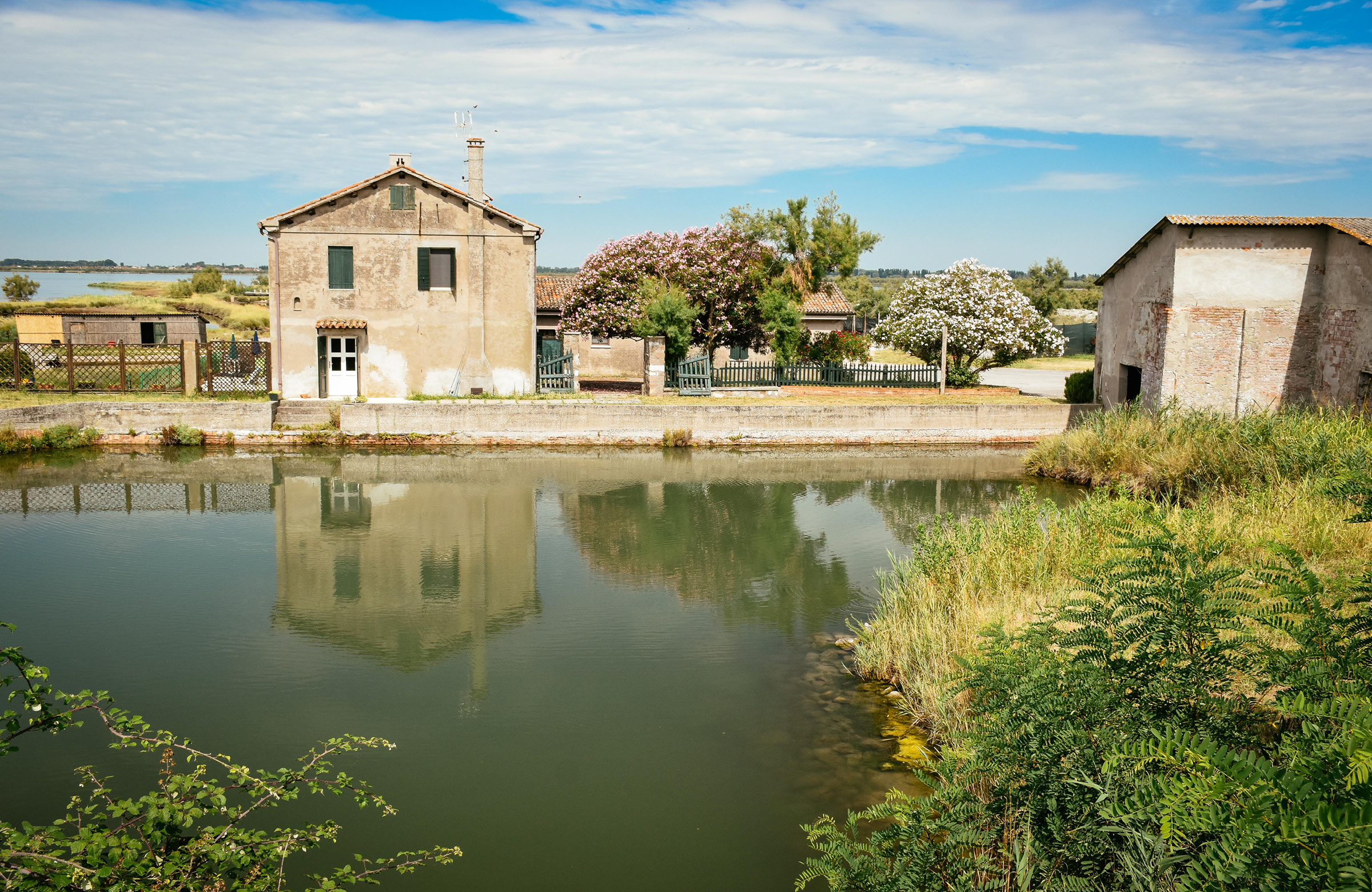
This is the journey for those who have a desire for slow time, knowledge and questions, relationships, real tastes and places off the beaten track. Some might call this slow tourism, but we prefer to call it an unusual journey of suspended time, made up of many little stories, made up of people and places that somehow survive.
One of our favorite stories is that of Zelo, a village of 300 inhabitants with a Habsburg bridge and a church, which always welcomes us with evenings of darts in Giuliano Contiero’s pub and evening barbecues (also of vegetables) right on the bridge where we dock. There is a great sense of warmth in this village, where in summer the elders still play cards in the street and coexist peacefully with a shop run by Chinese, like in the scenes of Andrea Segre’s movie I Am Li. Also vying with Zelo for the record of microscopic village is Lio Piccolo, very close to Jesolo: the only remaining example of a true lagoon reality as it was organized in the late 1700s, it can be reached by bike along a road in the midst of lagoon vistas just the space of a car. Pedaling we also reach a dairy where the patience is that of thousands of wheels of Grana Padano, and we arrive at the Bergantino Museum of Amusement rides and Popular Entertainment, an incredible place, every Peter Pan’s dream among merry-go-rounds, square shows and entertainment in a route divided by theme: mazes, medieval games, fairs, puppets, wonder tunnels and witches.
Another icon of a timeless place is Paolo Mantovani’s distillery, more than a shop, it is a perfume and fragrance boutique where you can not only taste but also learn to smell. One discovers unforgettable bottles, such as Acqua di Russia, and is enchanted to discover the world of the distilleries. Far from overtourism, immersed in absolute silence, you can also moor in Giudecca. A very quiet place with a view of the lagoon. Here you will sleep and get to know an authentic story of Venice, that of Franco Crea, a Venetian legend and the only real gondola builder of Venice. Also patient is the birdwatching, which in the Po Delta is mostly dedicated to the sighting of pink flamingos. But do you know why they are pink? We inquired: flamingos are predators of molluscs and crustaceans, especially Artemia salina, a small pink shrimp that contains the carotenoids that go into the feathers.
When you get home, you will look forward to telling each of these things.
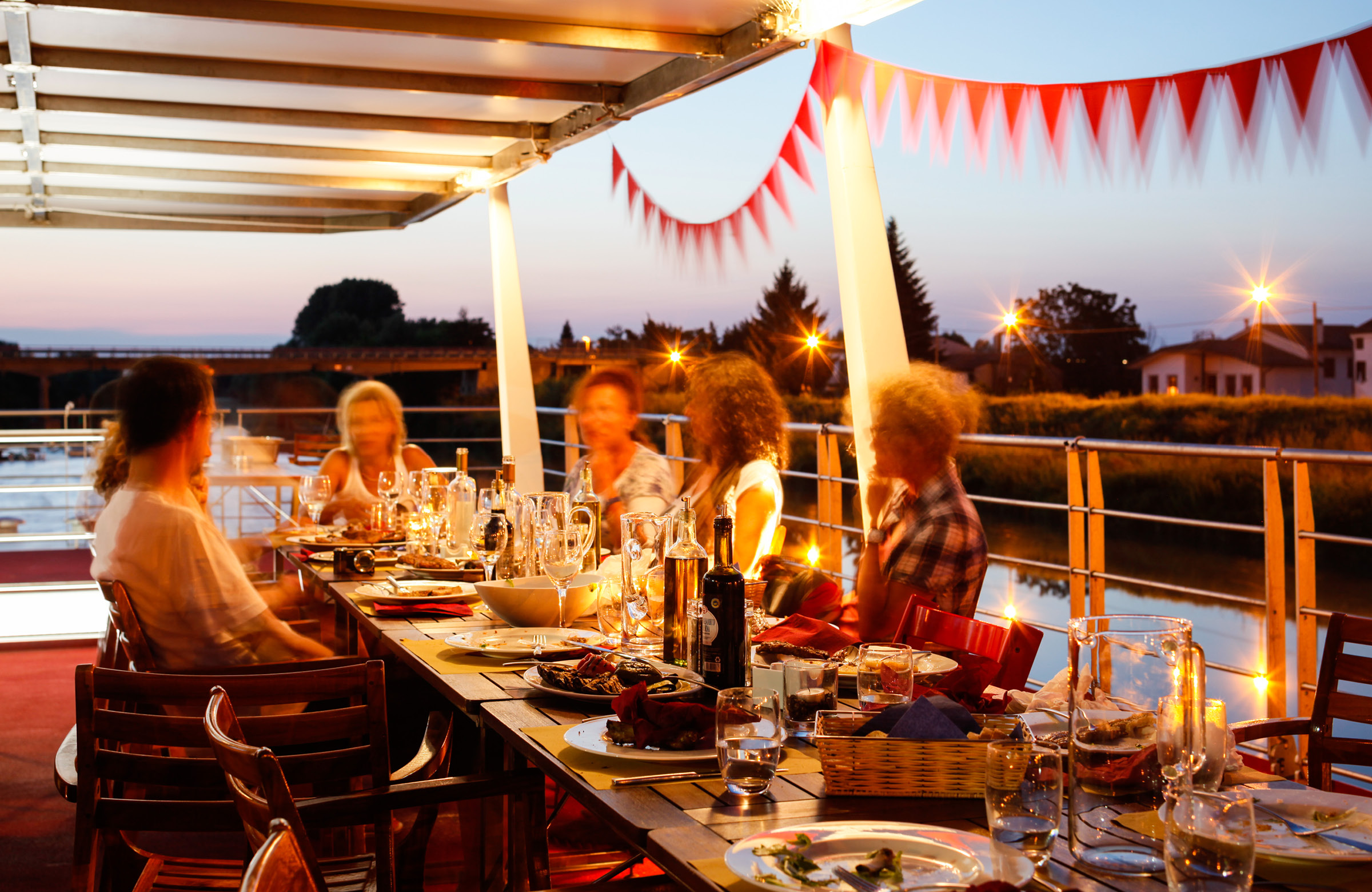
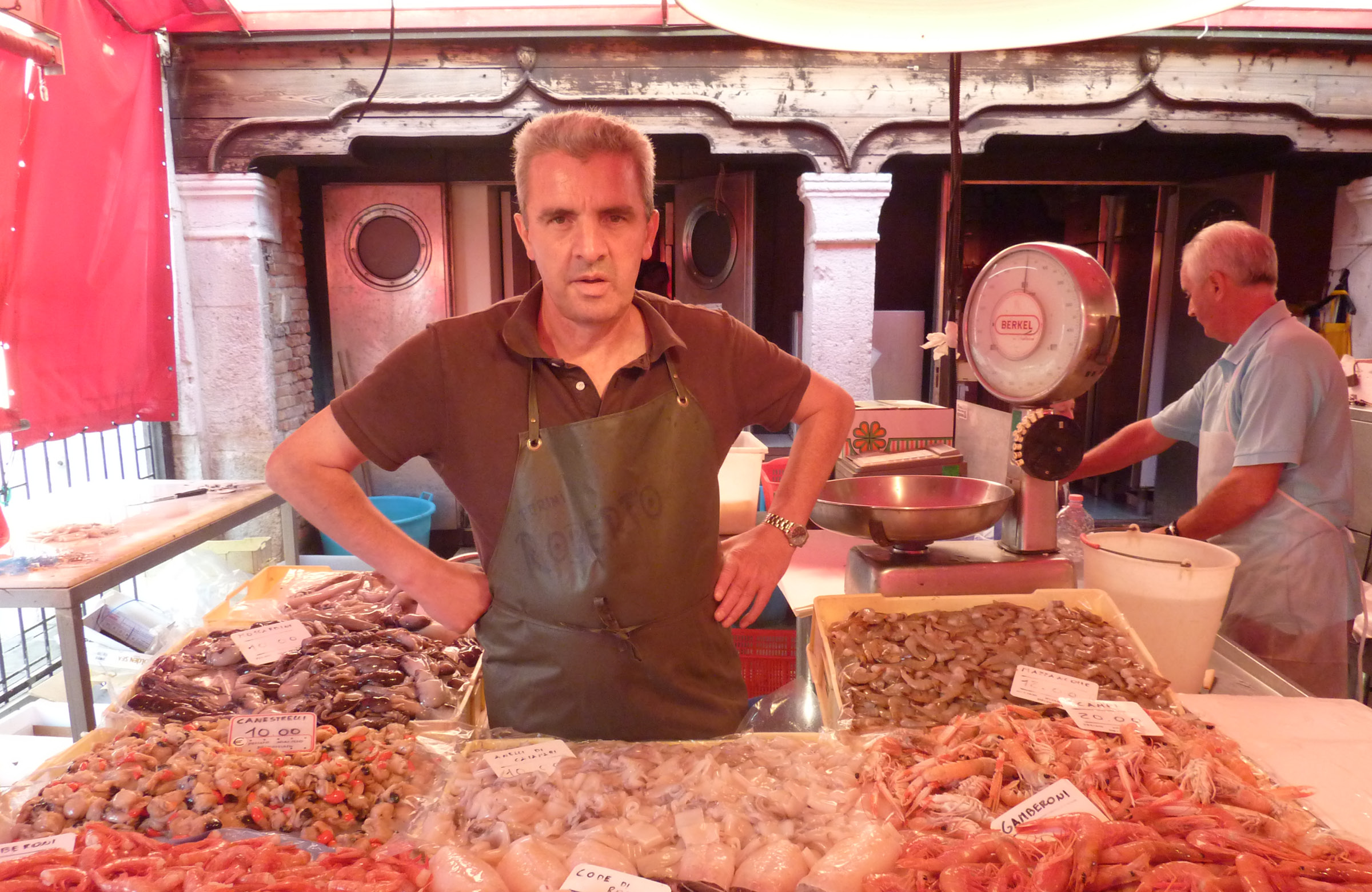
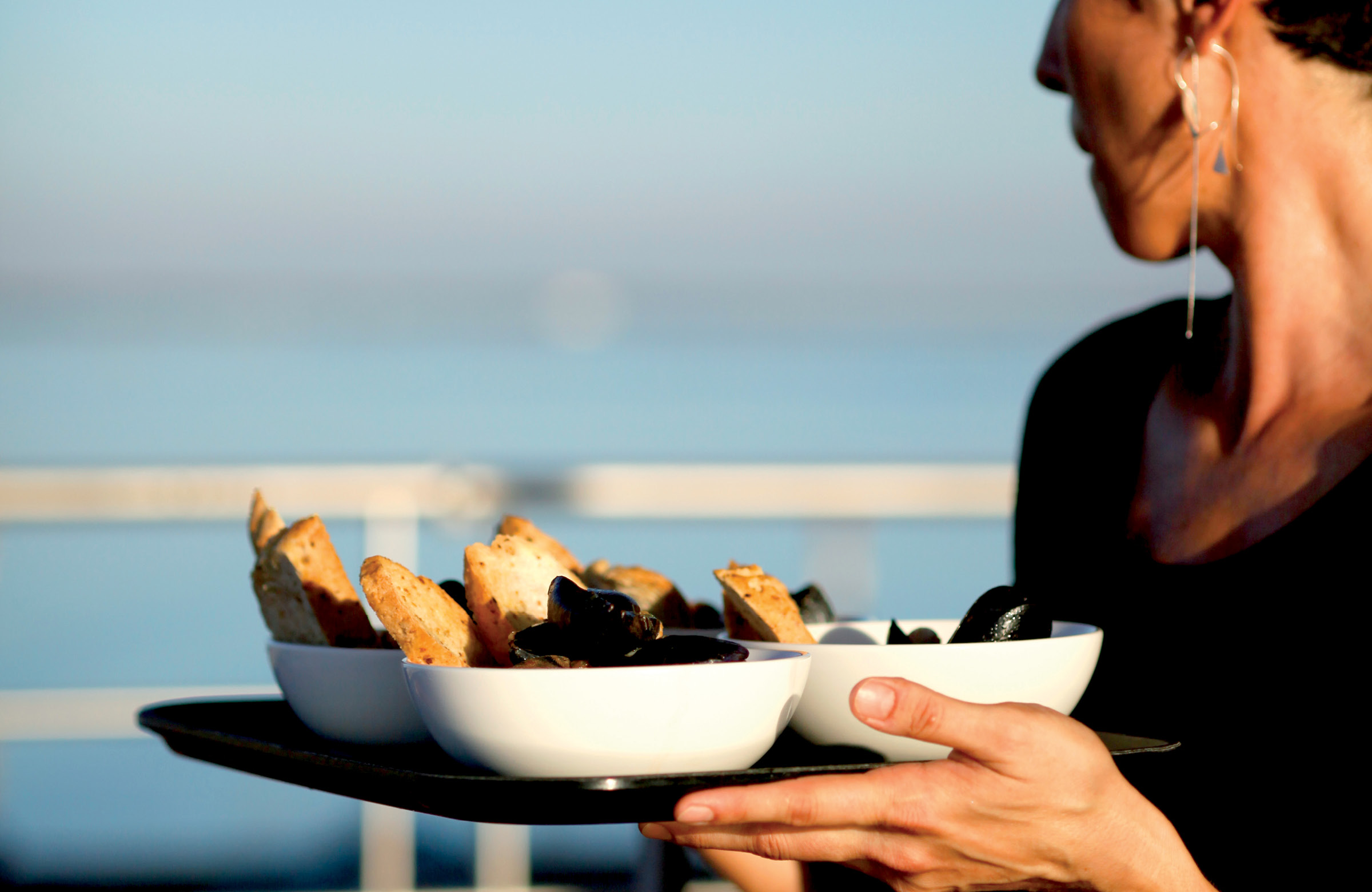
On-board cuisine is a reason to go
There is one aspect that should not be underestimated if you are thinking of going on a boat and bike trip: there is great food on board. There is even a cookbook about our on-board cuisine! In our opinion, there are at least three factors that make our cuisine a reason to go: it is balanced and designed for every dietary choice (vegans and vegetarians, this is for you); it takes into account the seasons, local ingredients and traditional recipes; and finally, it avoids unnecessary waste.
For us, talking about the territory means offering dishes and ingredients typical of the areas and cities we pass through. In Chioggia or Giudecca we always prepare sea bass fillet or Mediterranean fish soup, while in Mantua ravioli and braised beef are always on the menu. Another key ingredient is seasonality, from peas to artichokes (in homage to those of Sant’Erasmo and Lio Piccolo) in the spring, to zucchini and eggplant in the summer, to porcini mushrooms and pumpkin in the fall. Whenever possible, we look for local suppliers, such as the butcher’s shop in Zelo, which we walk to, or the fish market in Chioggia. But we don’t stop there, because our idea of local cuisine is often revisited, starting with traditional dishes and recipes, such as asparagus risotto in spring, to which we add strawberries.
Local but also balanced: we take great care to offer a balanced diet, with plenty of fruit and vegetables, trying to alternate proteins, carbohydrates and vitamins: in this way, even those who do not eat meat always have an alternative among eggs, legumes or cheese. For those who choose a vegetarian or vegan diet, we do not simply remove an ingredient from the plate, but think about how to replace it with the utmost care.
Another fundamental principle of our kitchen is to waste as little as possible: an ethical and functional message, because space on the boat is limited. We try not to throw anything away, so we sometimes use what was not eaten at dinner or breakfast for snacks or aperitifs: everyone appreciates this effort. With the same aim, we avoid plastic whenever possible, remembering that our vacation is in nature, among water, shores and rivers. Even our expenses are always reasonable: in the vegetables we use everything, even the stalks to make broth or, after tasting the Grana Padano cheese, with the crusts we make pasta and beans, just like the tradition.
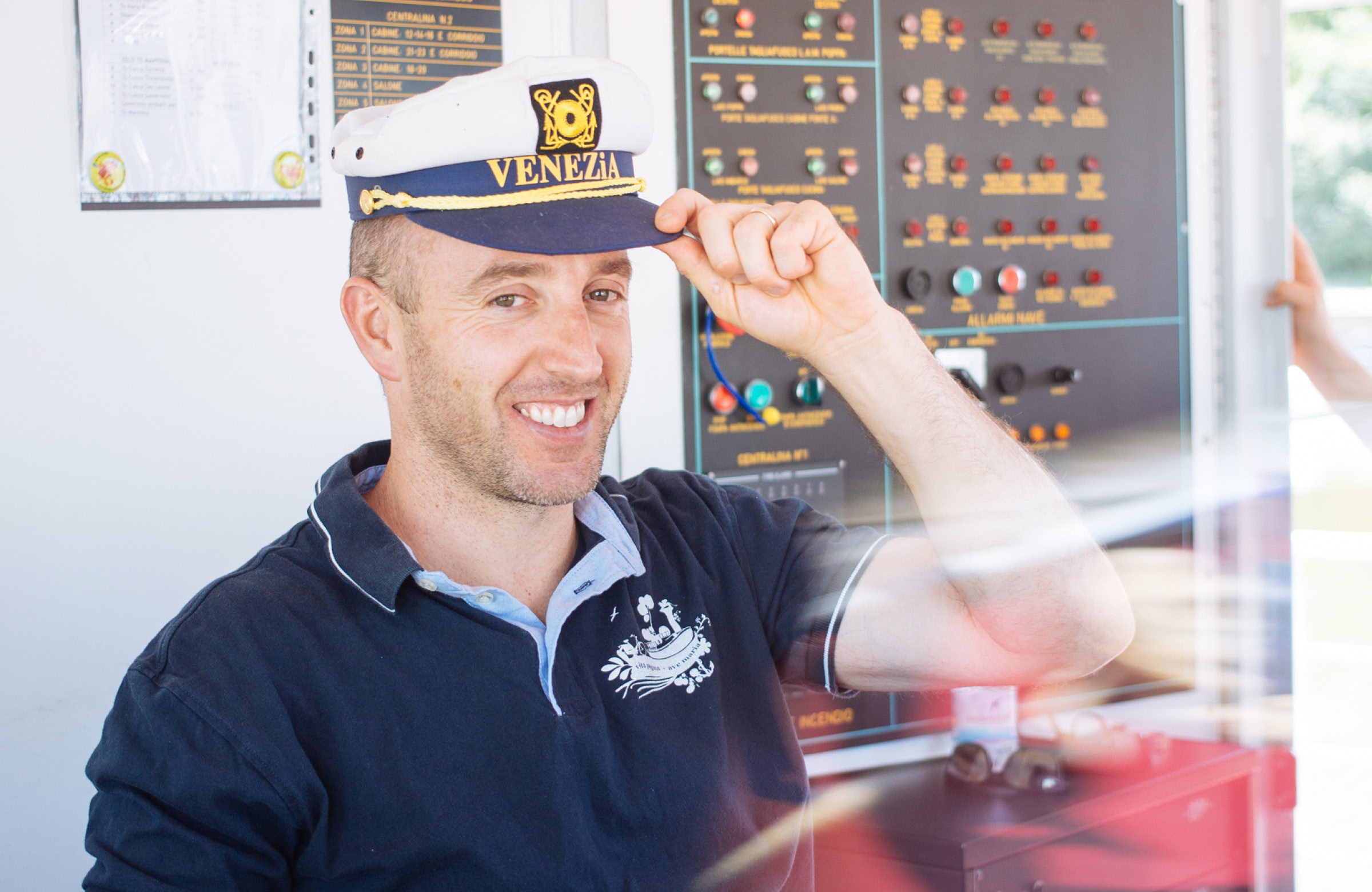
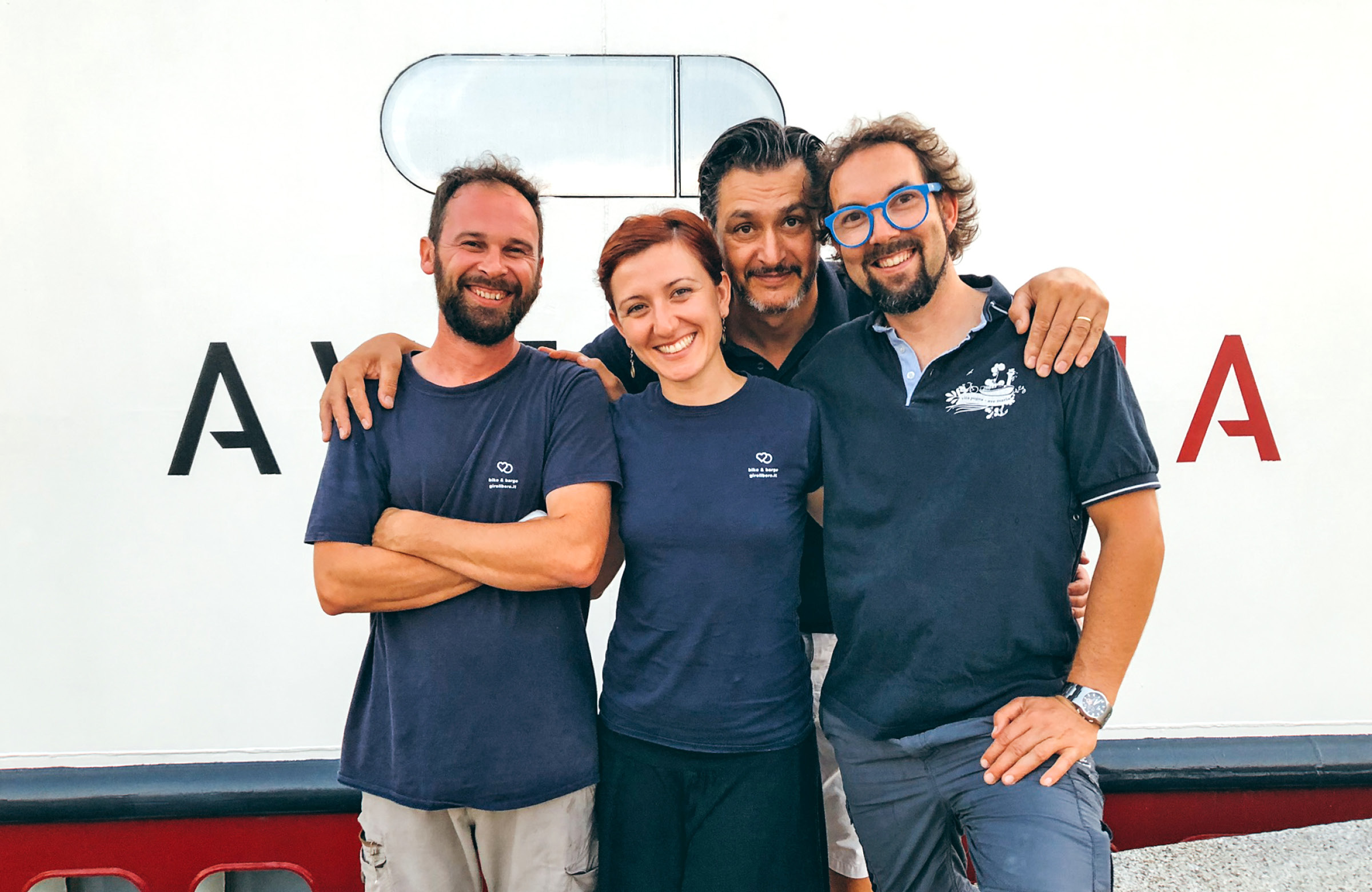
Life on board tastes like home, Captain’s word
Routine on a boat is not quite the same as on land; on a boat everything is possible because of the crew, who direct everything that happens. The captain, the skipper, the cooks, the tour guides – they are the ones who wake up before everyone else to prepare breakfast, and they are the ones who are always thinking about organizing the next day when everyone else is asleep. During the day, while the passengers are sailing, they do the shopping, the cleaning, meet the suppliers of vegetables and bread, and like in a big family, everyone does everything, without hierarchies, moving in the spaces of the boat with true complicity. It is not unusual to see the captain cooking (his specialty is barbecues) or the cook assisting the guide. In this family atmosphere, even the passengers feel at home and after a few days, there are those who set the table and those who sneak into the kitchen as if they were part of the crew. But the question everyone asks is: what is Captain Riccardo Tamani’s favorite moment on the boat? The answer lies in the breakfast ritual: drinking an American coffee, every day with a different and always beautiful view, perhaps after a sunrise run with his friend, the chef. But also sleeping in Venice or Pellestrina, where the breeze and the wind are a cuddle to fall asleep.
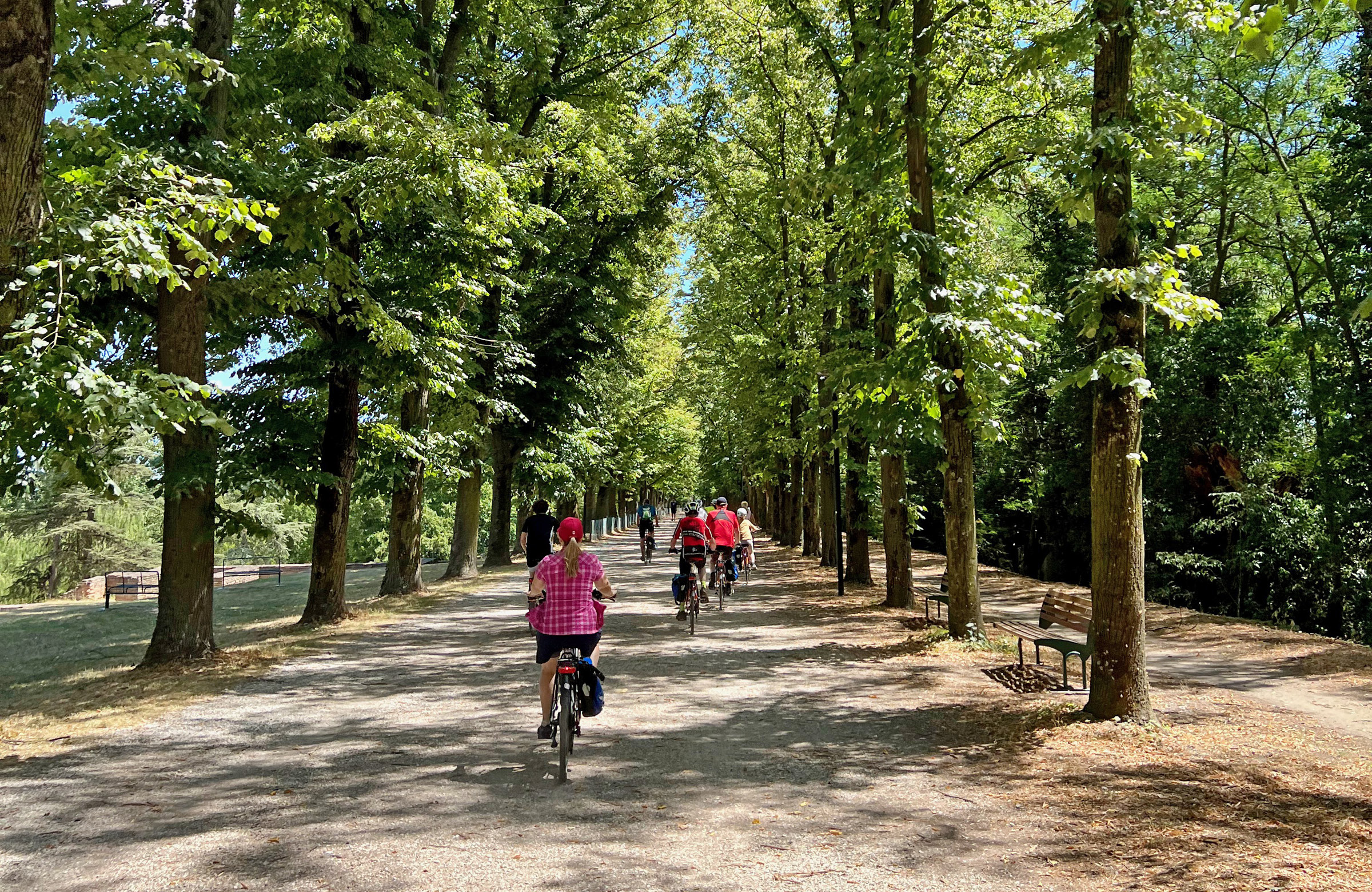
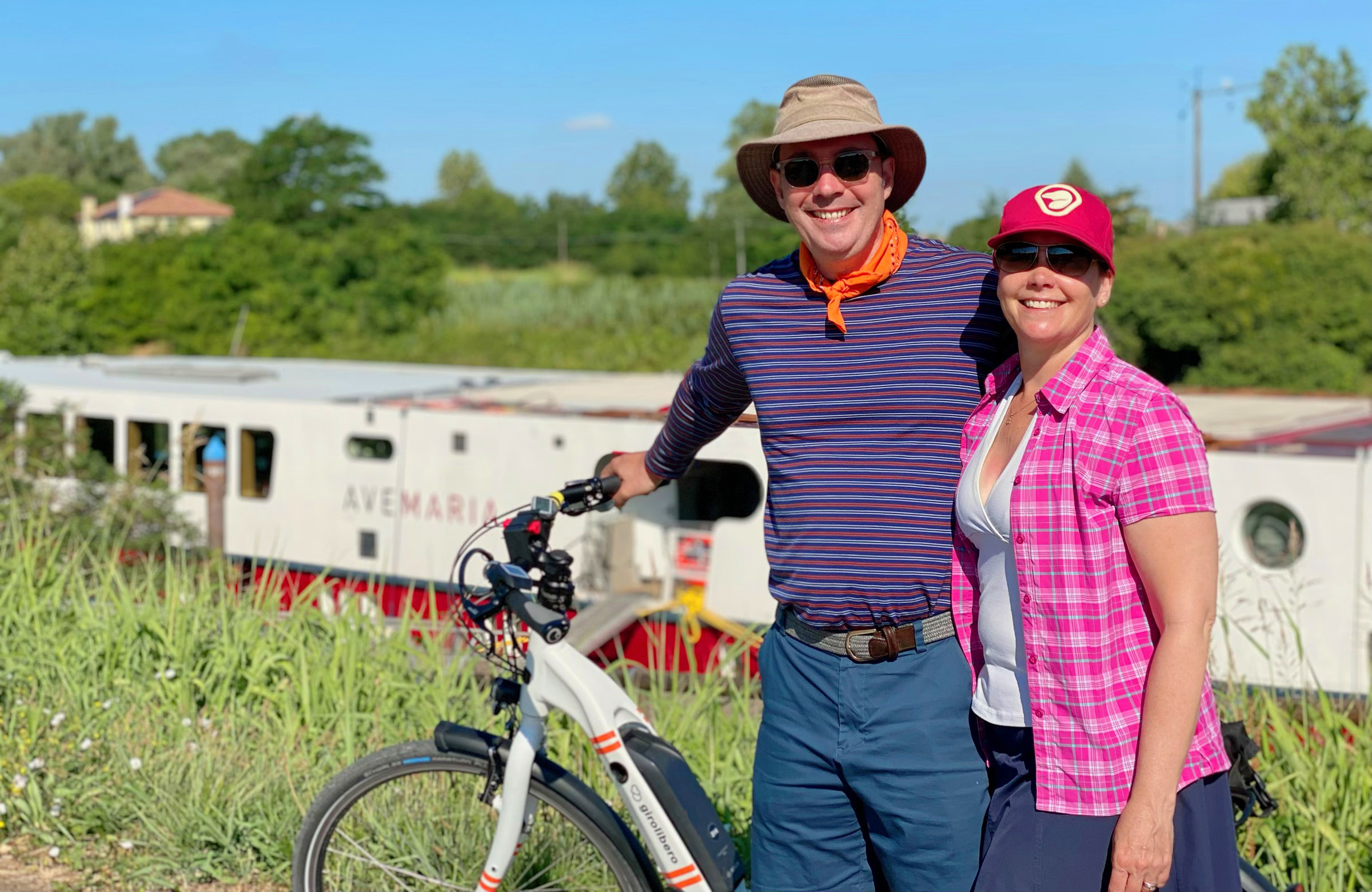
Pedaling with the wind in your hair, there’s nothing like it
The bicycle is mythical, it is an achievement that we earn pedal by pedal, it is a journey that tastes of authentic freedom. Emotions that remain even when we choose to travel with an e-bike, which absolutely does not scratch the feeling of wind in our hair, the memory of childhood riding adventures and the feeling of regaining time and space. Traveling with an e-bike isn’t about not pedaling, it’s about enjoying the experience of riding a bike to the fullest, helping you cover more miles. What’s more, it reduces fatigue on climbs and is also an ally on hot days: you are always accompanied by a pleasant breeze. The breeze becomes even stronger and it is pleasant to ride along the paths of the Venetian countryside or among the islands and canals of the Lio Piccolo. One last piece of advice before leaving is to read, a small, light book that fits in your suitcase. It is called “The Beauty of the Bicycle” by Marc Augé and it reminds us how the bicycle opens the door to dreams and the future.
If you think this is the perfect time to start this adventure among rivers, seas and suspended times, see more details on the journey.

